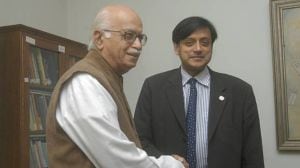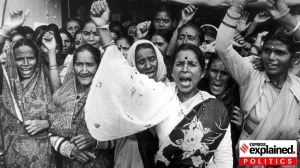S&P contests NPA figures
MUMBAI, Aug 18: International rating agency Standard & Poor (S&P) has estimated the real non-performing assets (NPAs) of the Indi...

MUMBAI, Aug 18: International rating agency Standard & Poor (S&P) has estimated the real non-performing assets (NPAs) of the Indian banking sector anywhere between 35 to 70 per cent of its total outstanding credit. Much of this — upto 35 per cent of the total banking assets — would be accounted as NPA if rescheduling and restructuring of loans to make them good assets in the book are not taken into account. This is much higher than the Reserve Bank of India’s NPA figure.
According to Ken McLay, Director, Financial Institutions Ratings, S&P, the central bank gross NPA figure of 17.8 per cent is suspect on account of liberal Indian definition of NPA and widely prevalent practice of ever greening of assets’. India continues to recognise NPAs only after 180 days of default, while the international norm is 90 days to 45 days.
According to the RBI, the total bank credit of all scheduled banks work out to Rs 3,22,566 crore as on July 31, 1997. In spite of poor credit offtake from the commercial banks, the netbank credit has gone up by another few thousand crores. Going by the argument of S&P, the NPA figure of banks should exceed Rs 107,000 crore. However, the RBI has been claiming that banks have accumulated NPAs of only Rs 42,000 crore which is hiding the true situation. The RBI has also been hiding the list of loan defaulters on the basis of a secret clause of banking rules in the country.
“If a meltdown like the one that occurred in East Asia happens in India, most of the assets now shown as good assets would turn bad," he said. S&P has placed India’s banking system at the bottom of the pile in a ranking on the risk profile of various Asian nations. The Indian banking system is rated high risk and features alongside Indonesia and is placed lower than crisis-riddled Korean and Thai banking systems.
The rationale for the low rating, according to McLay, is that even if the insular structure of Indian currency market may prevent a similar meltdown, it was imperative for India to open up its currency marketwhile moving towards full convertibility as part of its reform process. "When the markets are opened the risks for the banking sector will increase. The banks will no more be in a position to manage’ their NPAs," he said. S&P has assigned below investment grade rating of BB+/B with negative outlook to the long term foreign currency debt of ICICI, IDBI and Bank of Baroda. These ratings are mostly constrained by the sovereign rating assigned to India which is on par. According to McLay, the key considerations that is factored into the rating of Indian financial institutions and banks are the weak asset quality, high level of industry risk and undeveloped risk management capability.
McLay also raised concern about the large amount of bad loans arising from directed lending, which amounts to about 45 per cent of the gross NPA. He questioned possibility of achieving 5 per cent NPA level as targeted by the Narasimham committee because of the continued existence of directed or priority sector lending.
Recently,N Sampath, President of All India Bank Employees Association demanded an amendment to enable banks to publish names of loan defaulters. Sampath said the NPAs of banks had touched Rs 45,000 crore and the banks were in deep crisis. The debt recovery tribunals had been able to recover only Rs 74 crore.



- 01
- 02
- 03
- 04
- 05




























